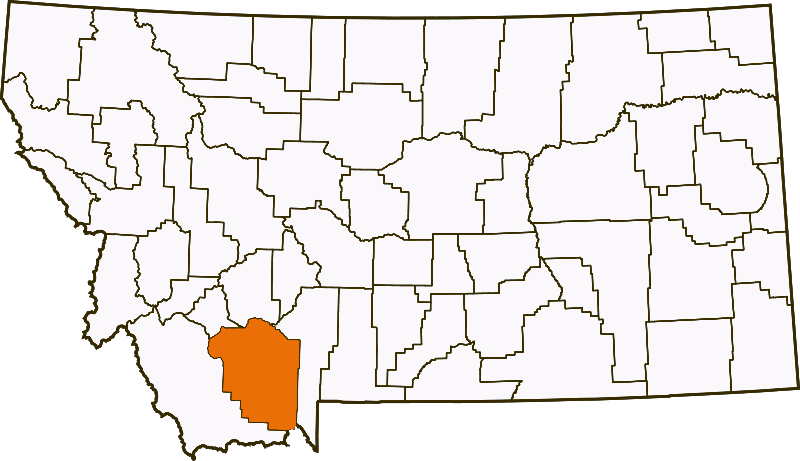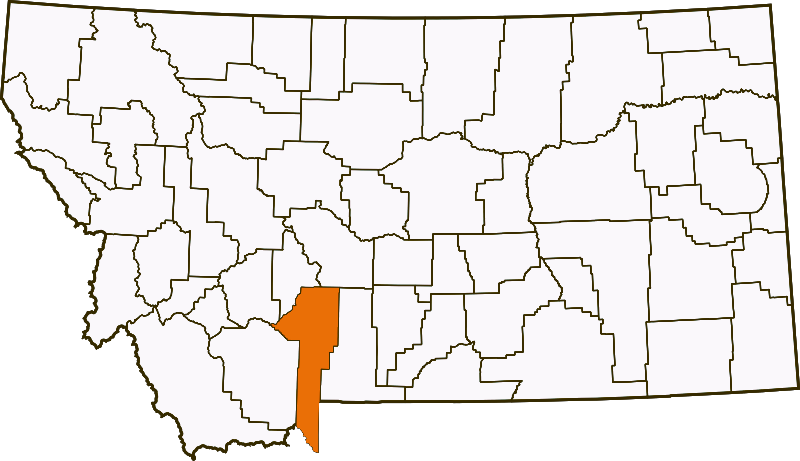An overview of Madison and Gallatin counties and how Big Sky straddles the line
By Daniel Bierschwale EBS COLUMNIST
The book on governance in Big Sky is broken into many chapters, starting with special purpose districts and working up to federal government. Where do counties fit into our community story and why is that important?
Counties are one of America’s oldest forms of government, dating back to 1634 when the first county governments, called “shires,” were established in Virginia. Nationwide over 3,000 county governments are now chartered to fit the needs of local citizens. Big Sky straddles Madison County to the west and Gallatin County to the east with limited public access through “one way in, one way out” via U.S. Highway 191 and Montana Highway 64. County oversight in our community truly is “a tale of two counties” that locals often find themselves navigating.
The basics of county governance
Counties balance numerous administrative responsibilities and deliver vital services to ensure healthy, vibrant, and safe communities. County services vary, ranging from managing elections and property tax collection to issuing birth certificates, marriage licenses and vehicle titles. They play a major role in justice and public safety by supporting emergency management and the criminal justice system. Counties keep communities safe by providing law enforcement and preventing crime.
Health and well-being are often county priorities, serving many at-risk residents. Health departments protect residents by offering services like flu shots, providing health information, and preventing public health emergencies. Many counties also invest in behavioral and mental health services for residents, including those involved in the justice system.
Counties are governed by locally elected officials including commissioners, sheriff and coroner, clerk and recorder, clerk of district court, attorney, justice of the peace and treasurer. They oversee the varied services while simultaneously managing multiple priorities.
This is not an easy task. All decisions and votes must be made in public, except decisions regarding confidential personnel and legal issues.
While these are generalizations, no two counties are the same. They are diverse in structure and how services are delivered to communities. In general, states decide the powers and authority of county governments through a constitution and subsequent law. There were nine Montana counties formed when structured as a U.S. territory in 1864, including Madison and Gallatin; today there are 56.
Madison County

Madison County’s seat resides in Virginia City—a historical capital of the Montana Territory. Its mission is to “provide quality public services in an honest, transparent, and efficient manner. We will encourage public involvement and cooperation to identify present and future needs and solutions.”
Known for its rugged landscapes, historic mining towns and outdoor recreational opportunities, Madison County is the 13th largest in Montana by land area. Big Sky Resort, Beehive Basin, Moonlight Basin, and Yellowstone Club all reside in Madison County. Voters elect three commissioners who serve four-year terms, with elections running every two years during the general election. Madison County commissioners serve one of three districts—District 3 serves our community.
With a census estimated population of approximately 9,265, Madison County is a mixture of old and new residents attracted by the area’s natural beauty and slower pace of life. The average median age of 54 is notably higher than the Montana average of 40.2, as a significant proportion of retirees are drawn to the tranquility of the region. Economically, Madison County has a diverse base, with agriculture, tourism and small businesses contributing to its vitality.
Madison County Commissioners typically hold public meetings every Tuesday at 10 a.m. temporarily at the Placer Loop Office Building in Virginia City. They welcome engagement from citizens.
Gallatin County




Gallatin County’s seat resides in Bozeman—home to the Bobcats of Montana State University and Montana’s busiest airport. Gallatin County’s mission is to “Enhance the quality of life in Gallatin County through service and innovation from dedicated, caring Peace Officers.”
Characterized by a dynamic blend of urban and rural influences, the county is an economic and cultural hub for the region and Montana’s 24th largest county by land area. Big Sky’s Meadow Village, Town Center and “the canyon” all reside in Gallatin County. Voters also elect three commissioners who serve six-year terms, with elections every two years. Unlike Madison County, for example, commissioners do not represent specific districts but rather the county “at large.”
Boasting a population of over 120,000, Gallatin is one of the fastest-growing counties in Montana. The presence of Montana State University attracts a notably younger population contributing to an average median age of 33.8, lower than the national average of 38.8. The university also fosters a culture of innovation and entrepreneurship, with a growing tech sector that complements more traditional economic pillars like agriculture and tourism. Gallatin County’s population growth is fueled by an influx of residents seeking a blend of outdoor recreation and urban amenities.
Gallatin County Commissioners typically hold public meetings every Tuesday at 9 a.m. in the Courthouse Community Room, 311 W. Main in Bozeman. They encourage the public to attend.




Navigating the confluence
The confluence of both counties’ characteristics creates a story of varied perspectives and lifestyles. Long-term residents find themselves sharing the landscape with new residents drawn by economic opportunities and the allure of a growing vibrant community. Citizens are encouraged to participate at regularly scheduled commission meetings or locally at the biannual joint county meetings. This helps inform county leaders to support important decisions that impact our community.
Aligning values to address these diverse needs is a critical task for local leaders. They must take a collaborative approach to providing essential community services. For instance, interlocal agreements are created between both counties and BSRAD to fund these vital services. Finding common ground becomes increasingly crucial to ensure that Big Sky remains a beacon of natural beauty, community spirit, and economic opportunity—for all residents, both old and new.
Data from this column and much more is available at:
https://data.census.gov/profile/
https://leg.mt.gov/lfd/mara-data-project/
Daniel Bierschwale is the Executive Director of the Big Sky Resort Area District (BSRAD). As a dedicated public servant, he is committed to increasing civic engagement and voter education. Many ballot issues impact government services and public funding including subsequent property tax impacts. BSRAD is the local government agency that administers Resort Tax, which offsets property taxes while also funding numerous community-wide nonprofit programs.
This post was originally published on this site be sure to check out more of their content.






